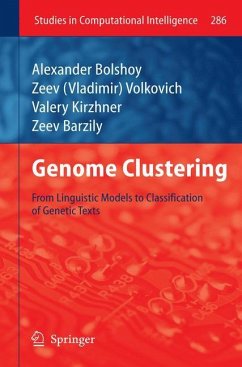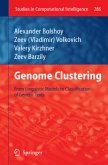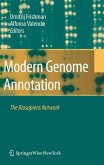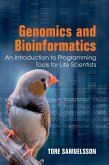This book reviews and discusses methods of comparing genetic texts, based on a variety of techniques for converting the text into a distribution on a certain finite support, known as "spectrum," and measuring similarities and distances between spectra.
Knighting in sequence biology Edward N. Trifonov Genome classification, construction of phylogenetic trees, became today a major approach in studying evolutionary relatedness of various species in their vast - versity. Although the modern genome clustering delivers the trees which are very similar to those generated by classical means, and basic terminology is the same, the phenotypic traits and habitats are not anymore the playground for the classi- cation. The sequence space is the playground now. The phenotypic traits are - placed by sequence characteristics, "words", in particular. Matter-of-factually, the phenotype and genotype merged, to confusion of both classical and modern p- logeneticists. Accordingly, a completely new vocabulary of stringology, information theory and applied mathematics took over. And a new brand of scientists emerged - those who do know the math and, simultaneously, (do?) know biology. The book is written by the authors of this new brand. There is no way to test their literacy in biology, as no biologist by training would even try to enter into the elite circle of those who masters their almost occult language. But the army of - formaticians, formal linguists, mathematicians humbly (or aggressively) longing to join modern biology, got an excellent introduction to the field of genome cl- tering, written by the team of their kin.
Hinweis: Dieser Artikel kann nur an eine deutsche Lieferadresse ausgeliefert werden.
Knighting in sequence biology Edward N. Trifonov Genome classification, construction of phylogenetic trees, became today a major approach in studying evolutionary relatedness of various species in their vast - versity. Although the modern genome clustering delivers the trees which are very similar to those generated by classical means, and basic terminology is the same, the phenotypic traits and habitats are not anymore the playground for the classi- cation. The sequence space is the playground now. The phenotypic traits are - placed by sequence characteristics, "words", in particular. Matter-of-factually, the phenotype and genotype merged, to confusion of both classical and modern p- logeneticists. Accordingly, a completely new vocabulary of stringology, information theory and applied mathematics took over. And a new brand of scientists emerged - those who do know the math and, simultaneously, (do?) know biology. The book is written by the authors of this new brand. There is no way to test their literacy in biology, as no biologist by training would even try to enter into the elite circle of those who masters their almost occult language. But the army of - formaticians, formal linguists, mathematicians humbly (or aggressively) longing to join modern biology, got an excellent introduction to the field of genome cl- tering, written by the team of their kin.
Hinweis: Dieser Artikel kann nur an eine deutsche Lieferadresse ausgeliefert werden.









